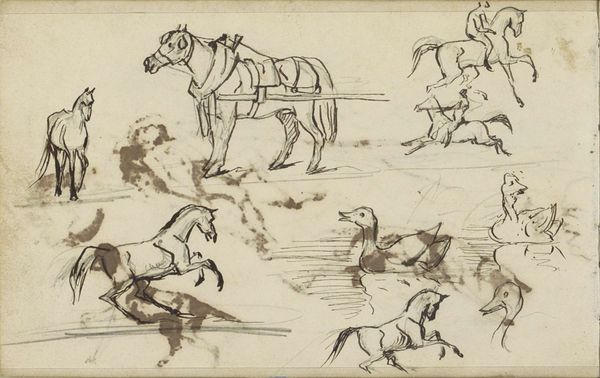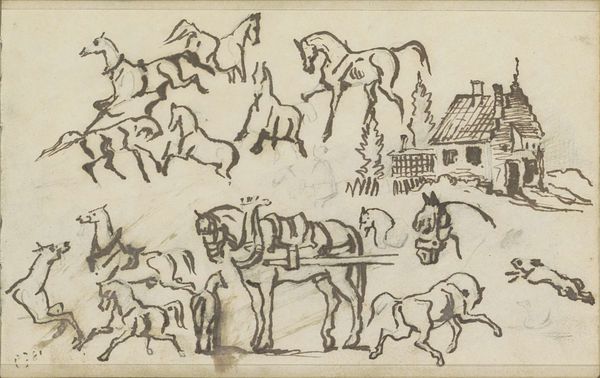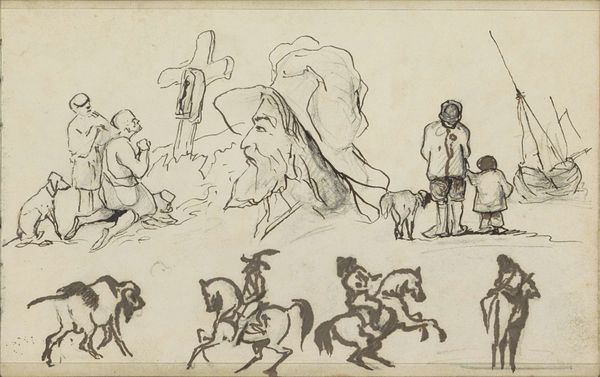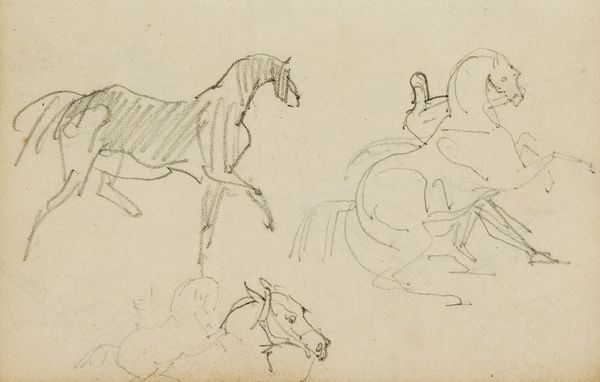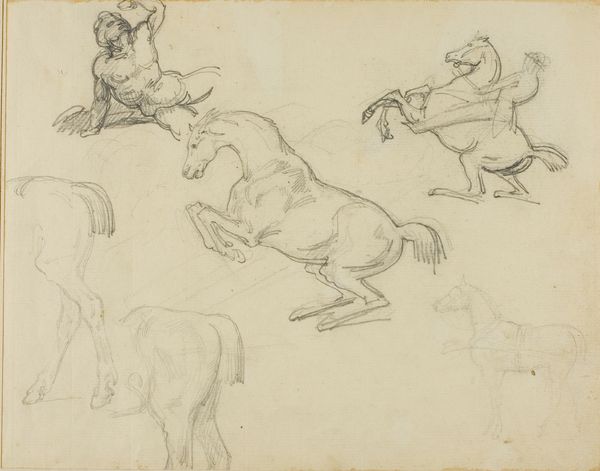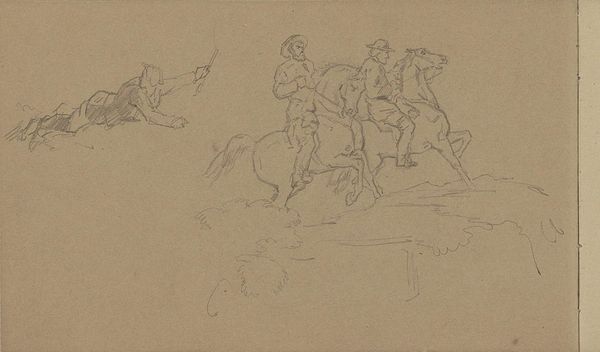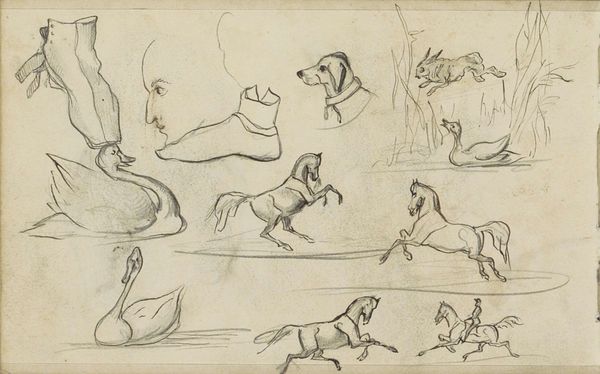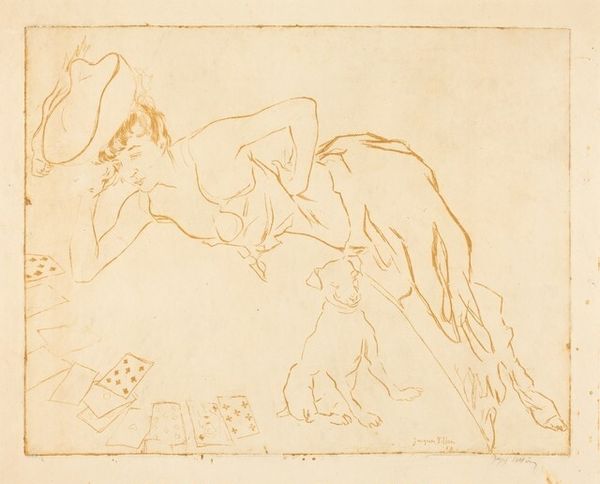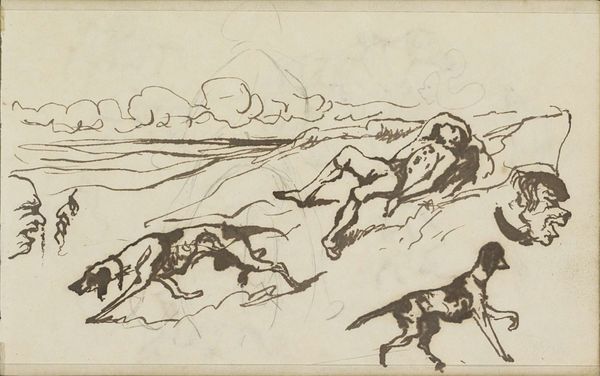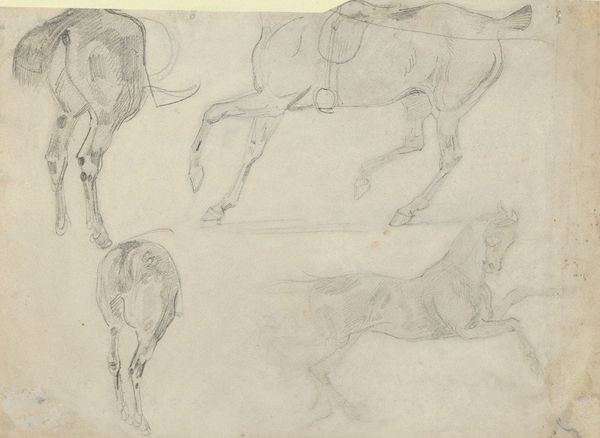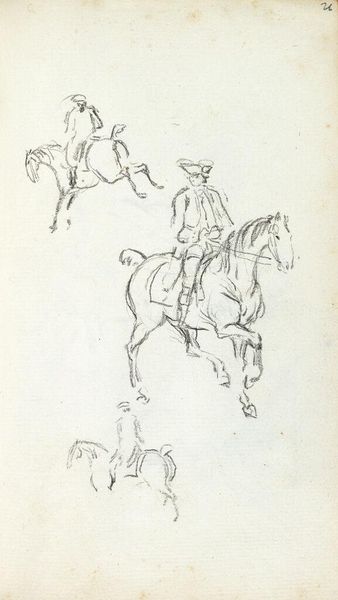
drawing, ink, pen
#
drawing
#
animal
#
pen sketch
#
dog
#
landscape
#
figuration
#
ink
#
pen-ink sketch
#
horse
#
sketchbook drawing
#
pen
#
realism
Copyright: Rijks Museum: Open Domain
Editor: This drawing, "Studieblad, onder andere met paarden en honden," or "Study Sheet, Including Horses and Dogs" by Johannes Tavenraat, dates to 1839. It's done in pen and ink. It reminds me of a page torn from a sketchbook, full of energy. What do you see in this work? Curator: It's fascinating how Tavenraat uses animal forms—horses, dogs, even rabbits—to tap into a deeper vein of human experience. Think about the symbolism embedded in these creatures. The horse, traditionally, represents power, freedom, even nobility, while the dog symbolizes loyalty and companionship. What stories do these animals tell together? Editor: They seem to be in motion. The horses are running, the dog is alert. Maybe it's about the hunt? Curator: Perhaps. The hunt is a recurring motif, embodying both the primal drive for survival and a more cultivated pursuit associated with aristocracy. Notice, too, how the sketchy quality of the lines gives a sense of immediacy, as if Tavenraat is trying to capture a fleeting moment. Does that immediacy alter how you view the scene? Editor: I hadn't thought about it that way. I guess it feels less staged, more real, even though it's just a study. And the faces scattered around, are they symbolic as well? Curator: Absolutely. Though less defined, those faces remind us of humanity's presence, the observer and the orchestrator of this animal drama. They provide context, suggesting these aren't just animals in a field, but figures in a narrative. Editor: I see what you mean. The symbols really enrich the image. It's more than just a study; it's a cultural snapshot. Curator: Indeed. The drawing embodies a timeless dialogue between humans and the natural world, one reflected and refracted through the symbolic lens of art.
Comments
No comments
Be the first to comment and join the conversation on the ultimate creative platform.
